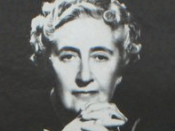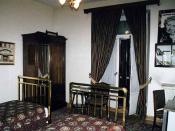Tzvetan Todorov pointed out that detective fiction contained "not one but two stories: the story of the crime and the story of the investigation. An examination of "Agatha Christie's "The Witness for the Prosecution" present a story of crime and investigation as a means to keep the reader in absolute suspense from beginning to end.
Agatha Christie's, "The Witness for the Prosecution,"begins by revealing to the implied reader that a crime had been committed, the murder of Miss Emily French. The motives for wanting her dead were unknown. The one suspect, Leonard Vole, a man who made the acquaintance of Miss French by rescuing her, was standing trial for her murder.
The investigation to this scandalous crime begins in the law office of Mr. Mayherne, Vole's legal representative. Vole presents himself in a calm and composed manner, attributing psychological reasoning to amplify why he is incapable of committing such a crime.
Vole himself narrates the first flashback, "It was one day in Oxford. I saw an elderly lady crossing the road. She was carrying a lot of Parcels. In the middle of the street, she dropped them tried to recover them, found that a bus was almost on top of her ... I recovered her parcels wiped them off the best as I could, retied the string of one, and returned them to her (Christie,6)." This flashback undermines our suspicions and categorizes him as a man who has been wrongly accused for murder. Despite the implied readers believing Vole is innocent, Mayherne contain evidence that proves his client to be just the opposite, "there's almost too much evidence against him (19)." By not believing in his clients innocence, he opens the gap between what he believes and what the would believe.
After questioning Vole for possible...


